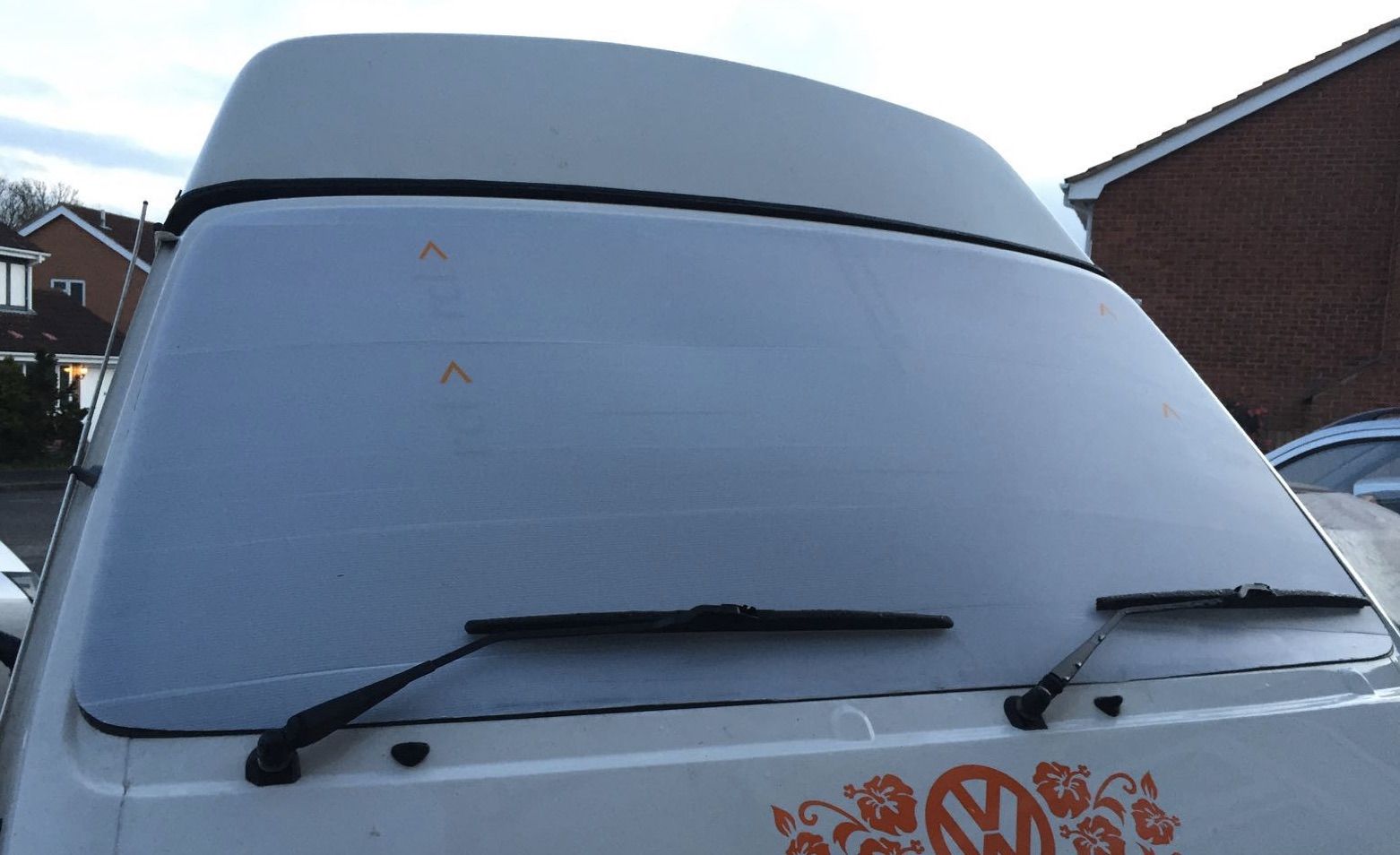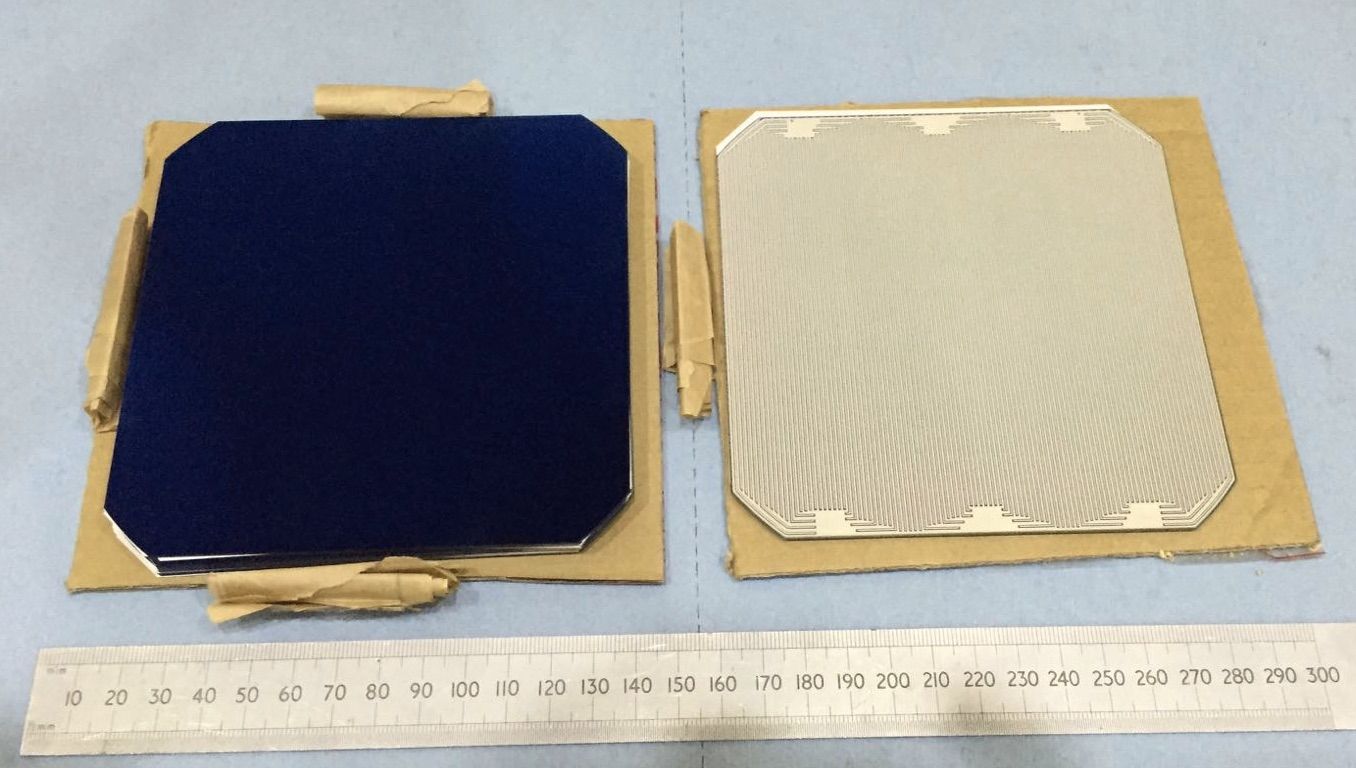My plan is to make a flexible panel that will sit in the windscreen and work as a combined blackout screen/sunscreen/solar panel. If I don't happen to be parked facing the sun, or I'm parked in the shade, I could remove it and prop it up facing the sun nearby. I already have a 100W panel fixed to the roof of my poptop, but I don't let it dictate where I park or which way I face, so it doesn't always face the sun.
My first stab at templating the screen made me realise how unwieldy a single panel would be - it's virtually impossible to place it inside the screen due to the rear view mirror, the grab handles, the dash binnacle etc. So I'm going to make two half-panels (driver's side and passenger side), with a slight overlap, and a plug and socket to join them together. I'll probably add suckers to the corners to hold them in place, but I think the visors will do that sufficiently anyway.

Each half panel will have room for three rows of five of the cells (they're 125mm square), allowing for my stick-on sun visor across the top of my screen and the wipers at the bottom. A solar panel works by summing the voltage generated by each cell - the current through every cell will be the same since they're wired in series. The overall power, given by volts x amps, is limited by the current produced by the 'worst' cell. So if one cell is shadowed, it will produce a lower current and that will limit the output of the entire panel. So it's important not to place any of the cells behind wiper blades or sun visors.
My cells arrived today. They're rated at 3.4W each. 30 of them in series will make just about 100W. They're gorgeous things to look at - they have a velvety appearance and reflect virtually nothing. I guess that's what you want in a cell designed to convert sunlight to electricity - you don't want it reflecting the light it's supposed to be using.

I daren't touch the surface, tempting as it is, as apparently they mark very easily. They'll need encapsulating once the panel is assembled, with something like this, although that seems rather expensive for what it is. I'll look out for a cheaper supplier. I plan to use 1mm thick PVC sheet as my substrate - I may change that to 2mm if the 1mm feels too flexible.


